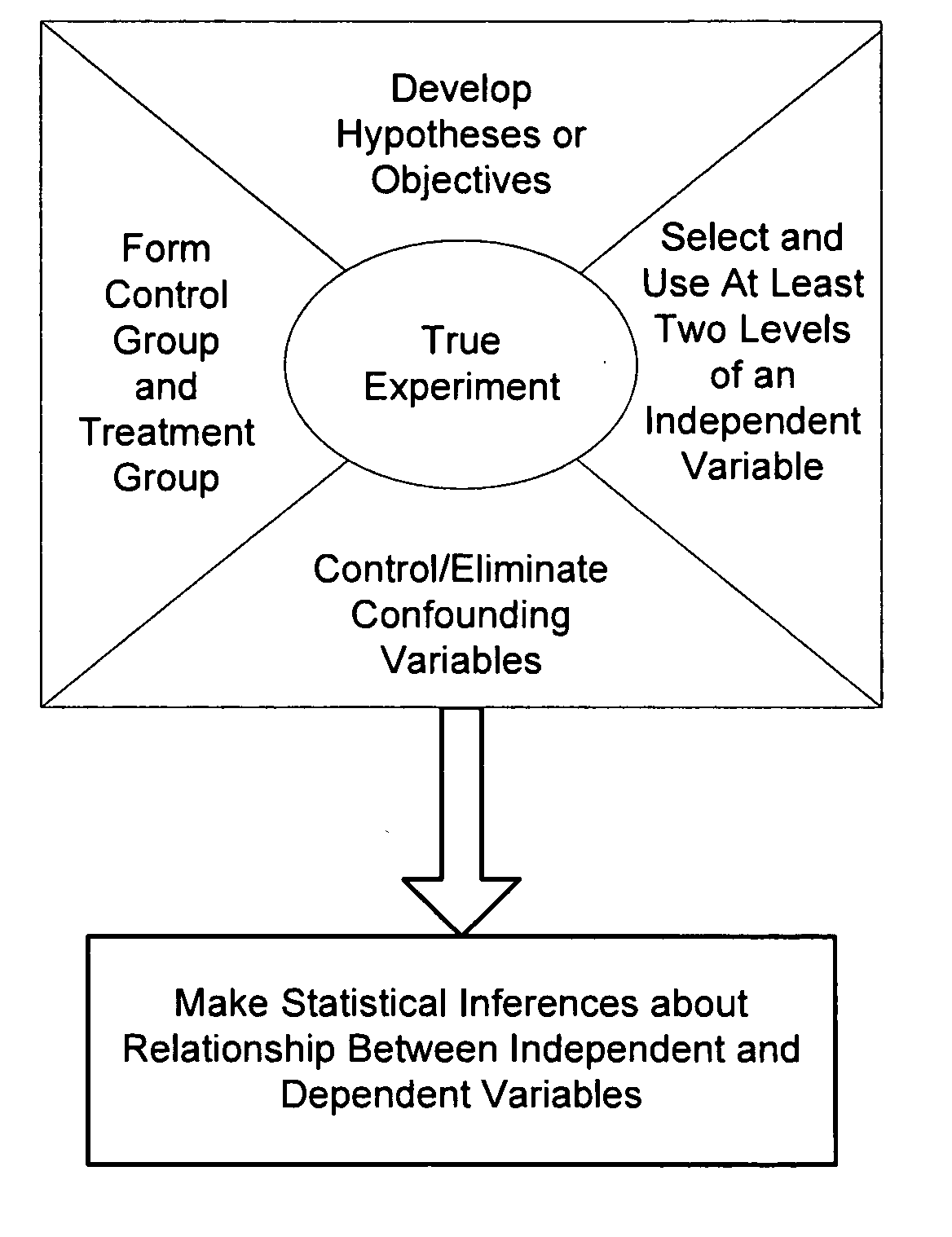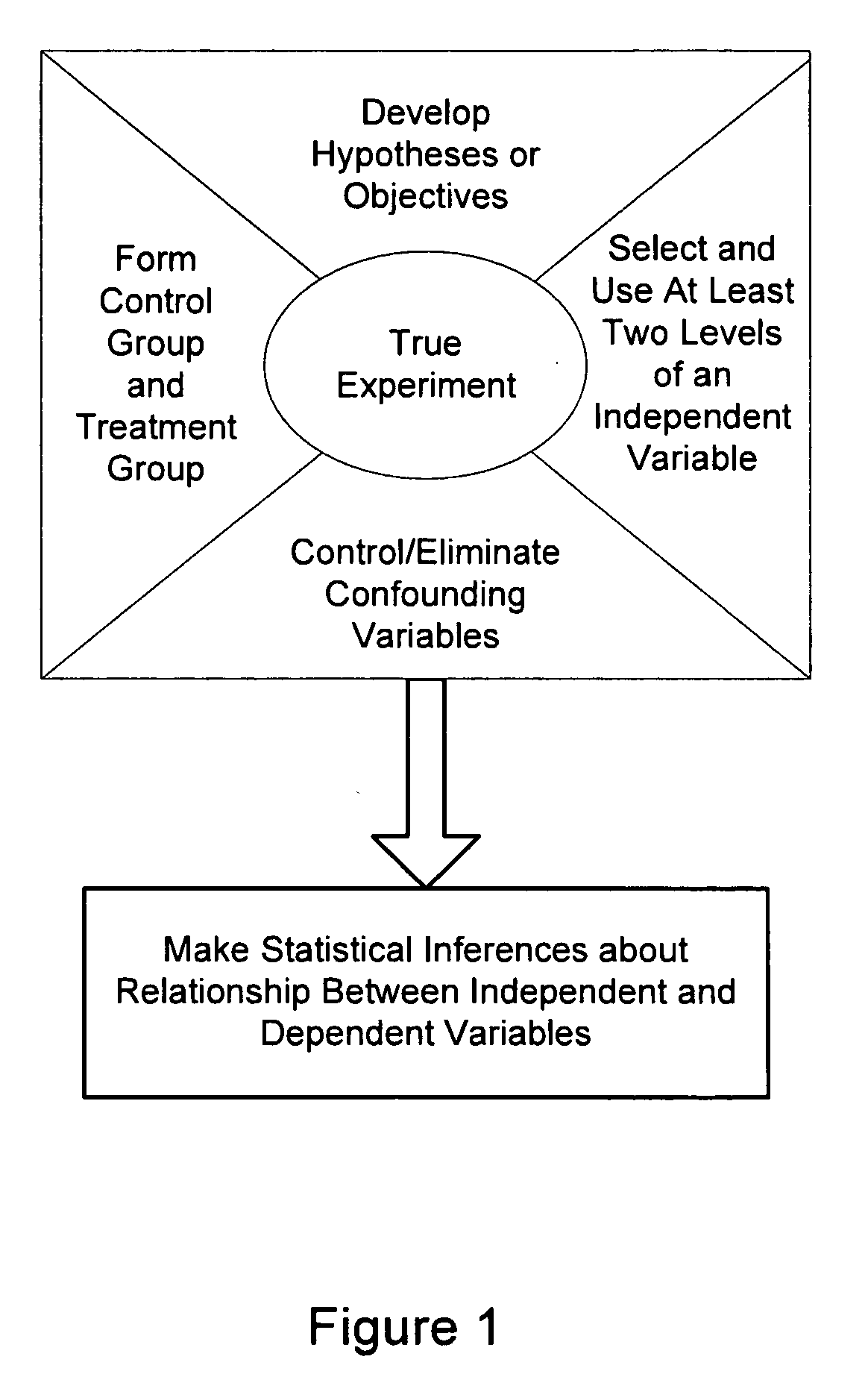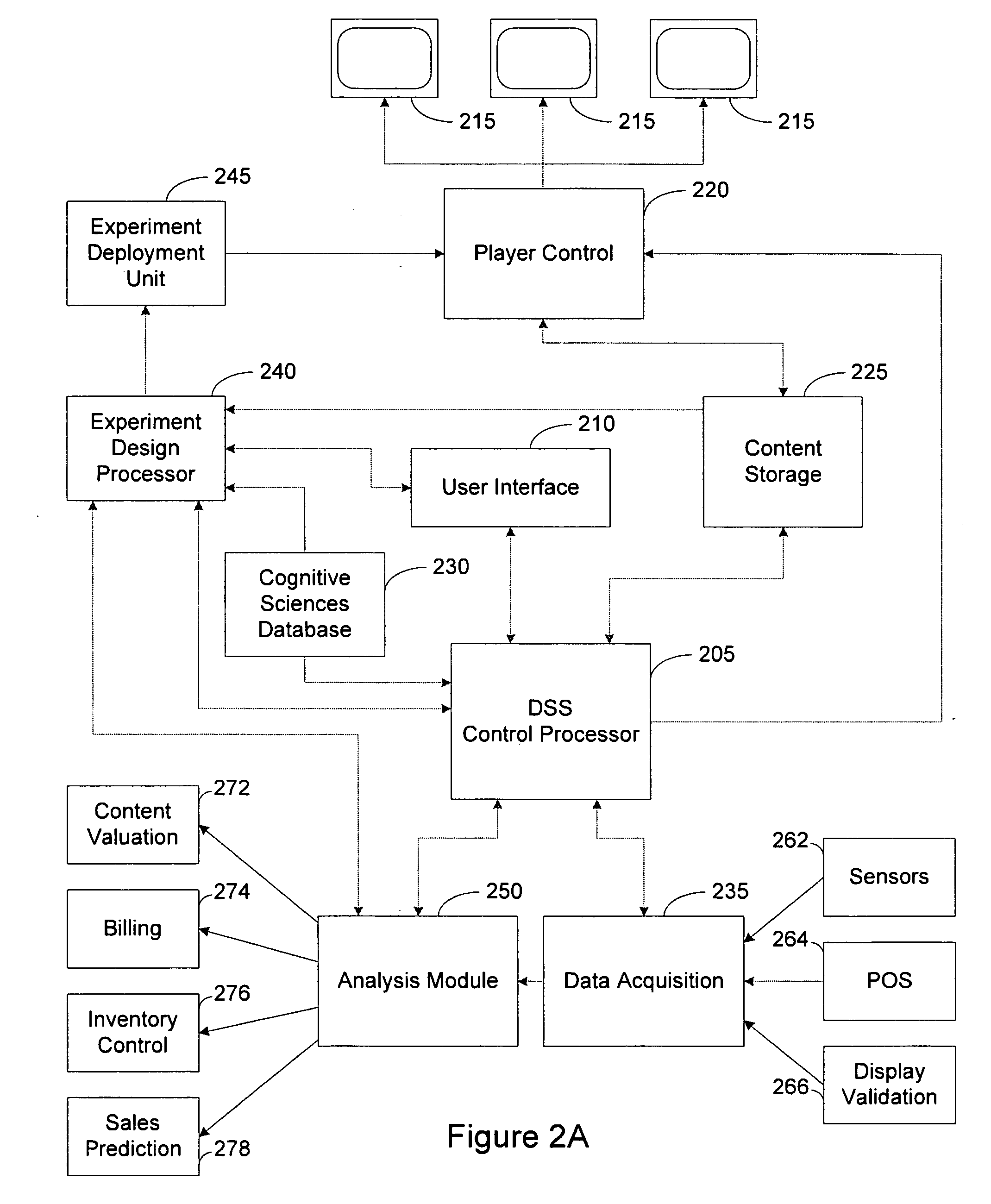Systems and methods for designing experiments
a design system and system technology, applied in the field of methods and systems for designing true experiments, can solve the problems of inability to determine whether the causal relationship between independent and dependent variables is causal, inability to know which factor (variable) caused any observed change in the dependent variable(s), and inability to make statistical inferences about causal relationships between independent and dependent variables. the effect of one or more confounding variables
- Summary
- Abstract
- Description
- Claims
- Application Information
AI Technical Summary
Benefits of technology
Problems solved by technology
Method used
Image
Examples
Embodiment Construction
[0030] In the following description of the illustrated embodiments, reference is made to the accompanying drawings that form a part hereof, and in which is shown by way of illustration, various embodiments in which the invention may be practiced. It is to be understood that the embodiments may be utilized and structural changes may be made without departing from the scope of the present invention.
[0031] The present invention is directed to methods and systems that use a computer to determine whether the design of an experiment is a true experiment. The elements needed for a true experiment are illustrated in FIG. 1. A true experiment includes development of a hypothesis or objective. Dependent and independent variables are identified, and at least two levels of an independent variable are used. Samples are randomly assigned to levels of the independent variable. There is some kind of method for controlling for or eliminating confounding variables. If all of these elements are appro...
PUM
 Login to View More
Login to View More Abstract
Description
Claims
Application Information
 Login to View More
Login to View More - R&D
- Intellectual Property
- Life Sciences
- Materials
- Tech Scout
- Unparalleled Data Quality
- Higher Quality Content
- 60% Fewer Hallucinations
Browse by: Latest US Patents, China's latest patents, Technical Efficacy Thesaurus, Application Domain, Technology Topic, Popular Technical Reports.
© 2025 PatSnap. All rights reserved.Legal|Privacy policy|Modern Slavery Act Transparency Statement|Sitemap|About US| Contact US: help@patsnap.com



